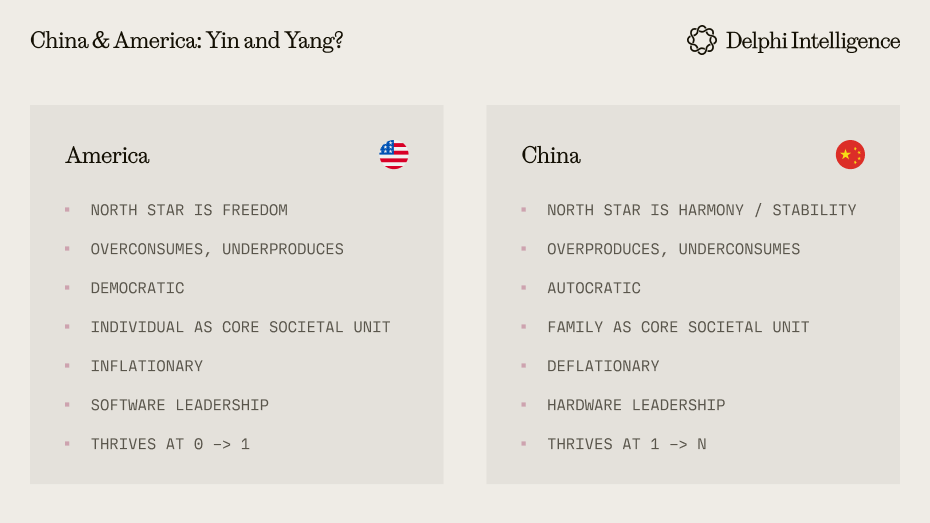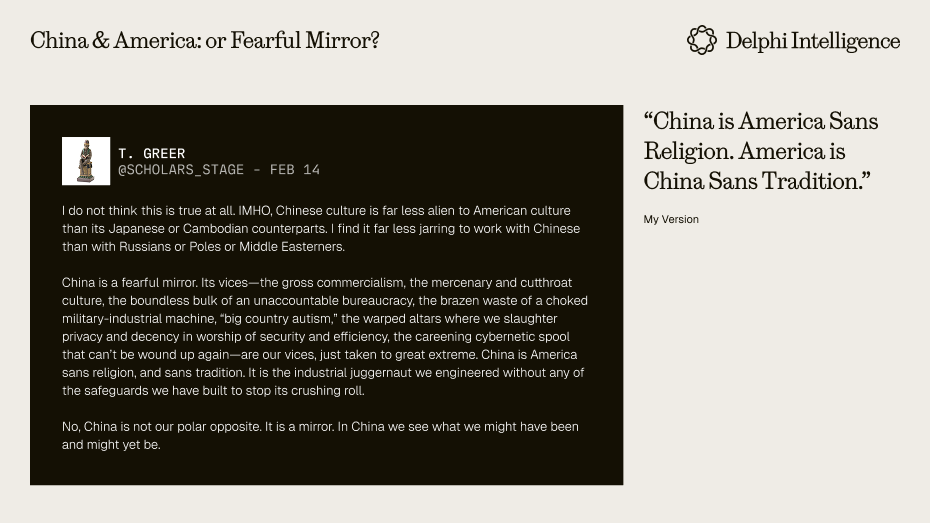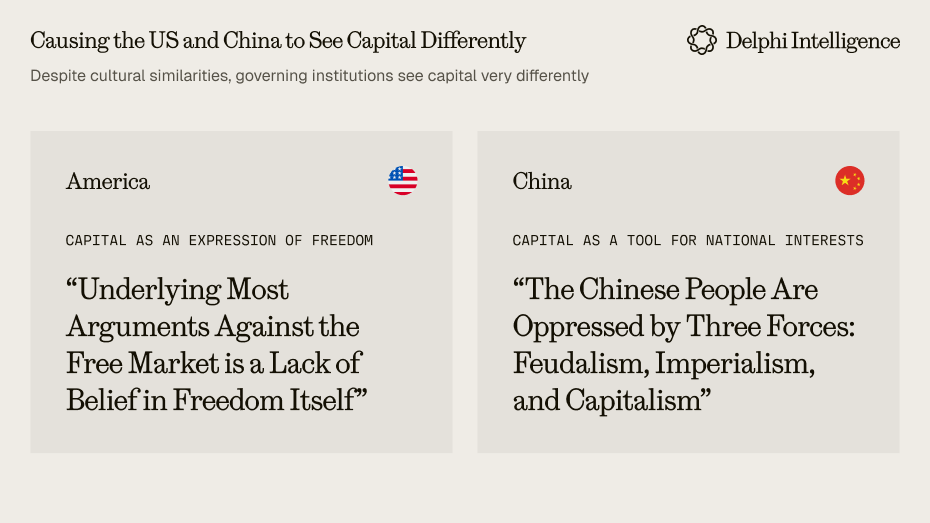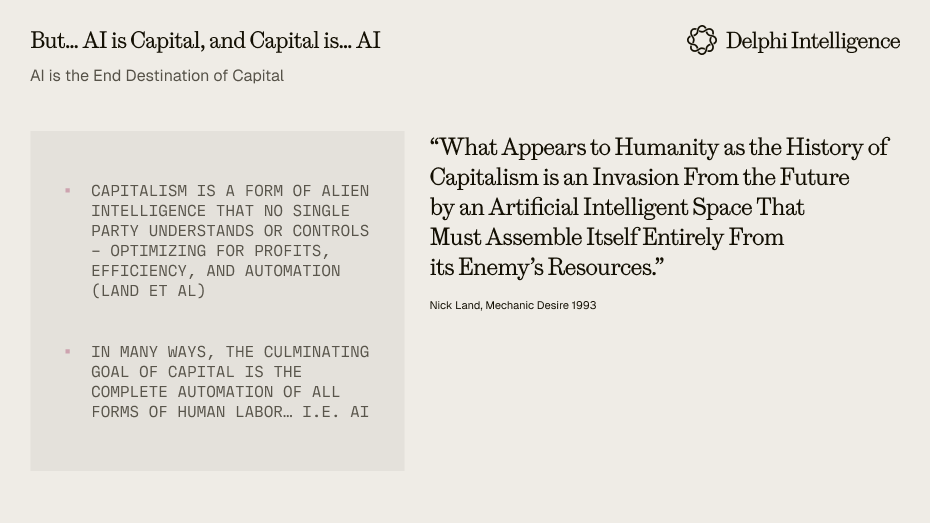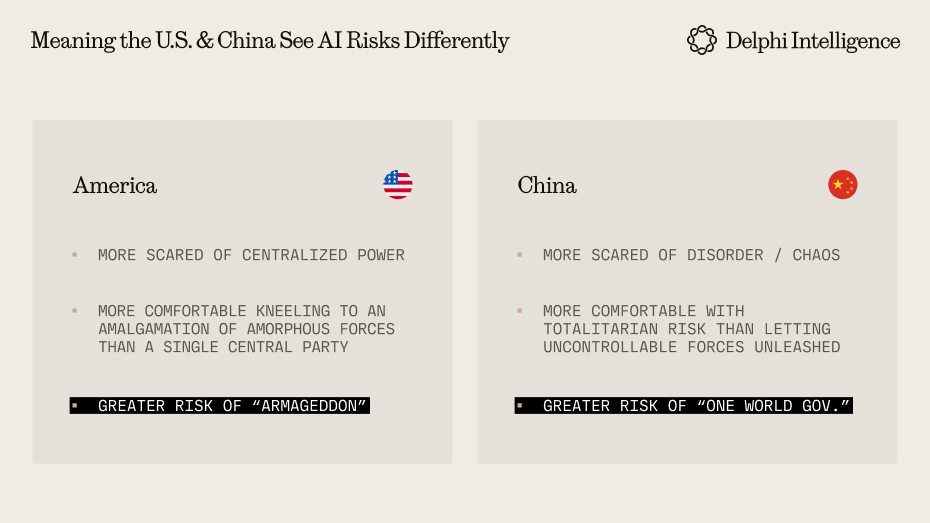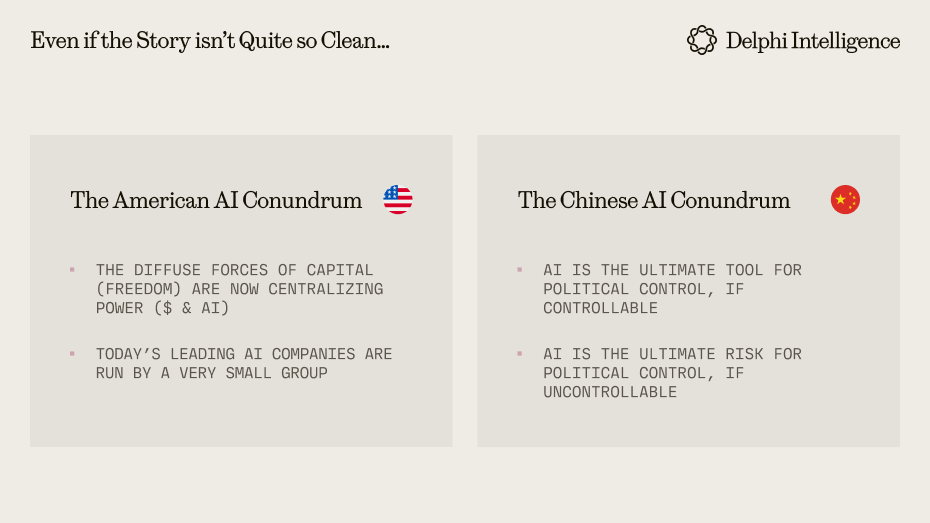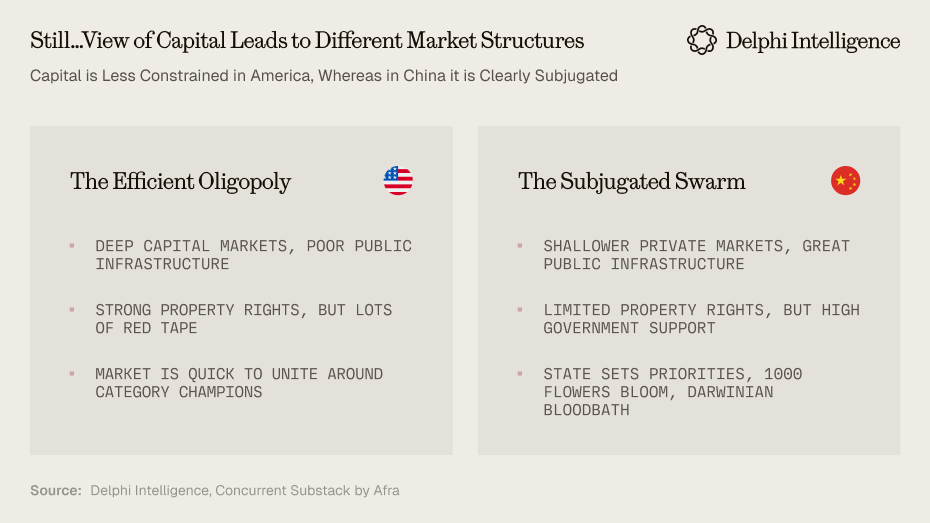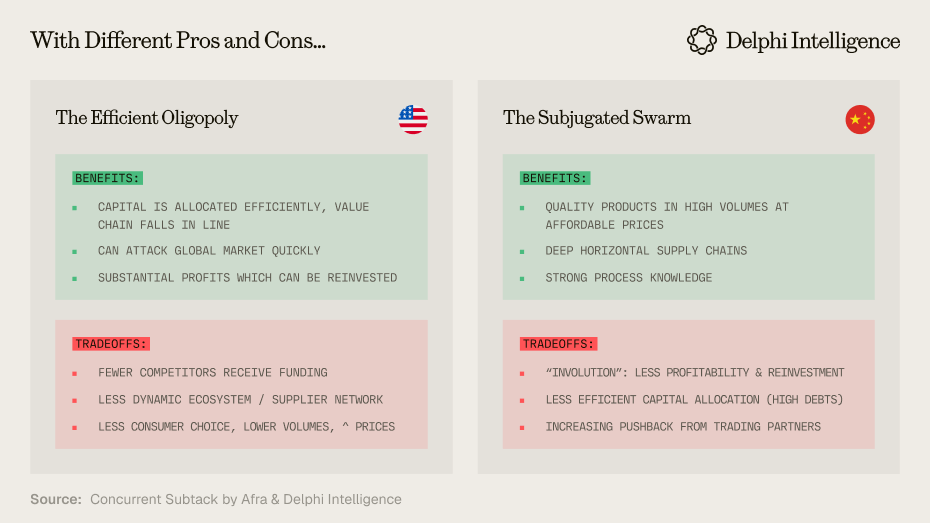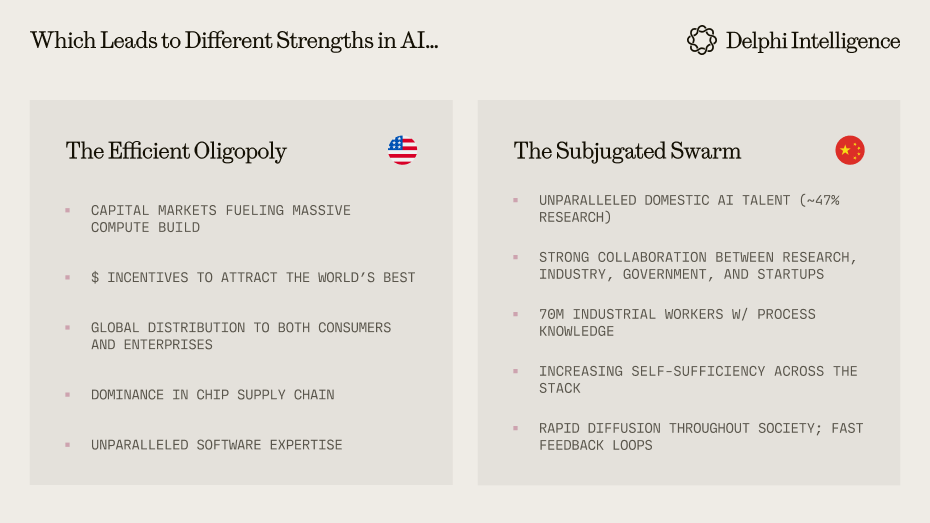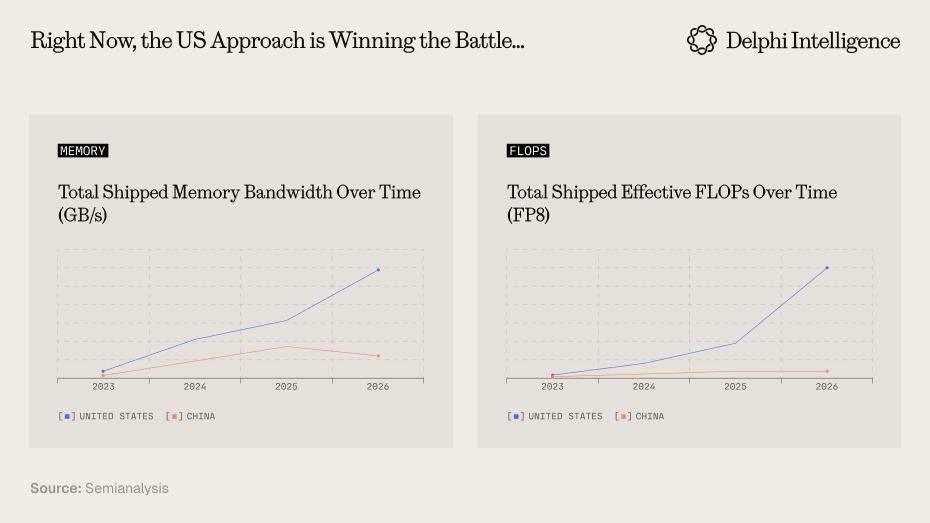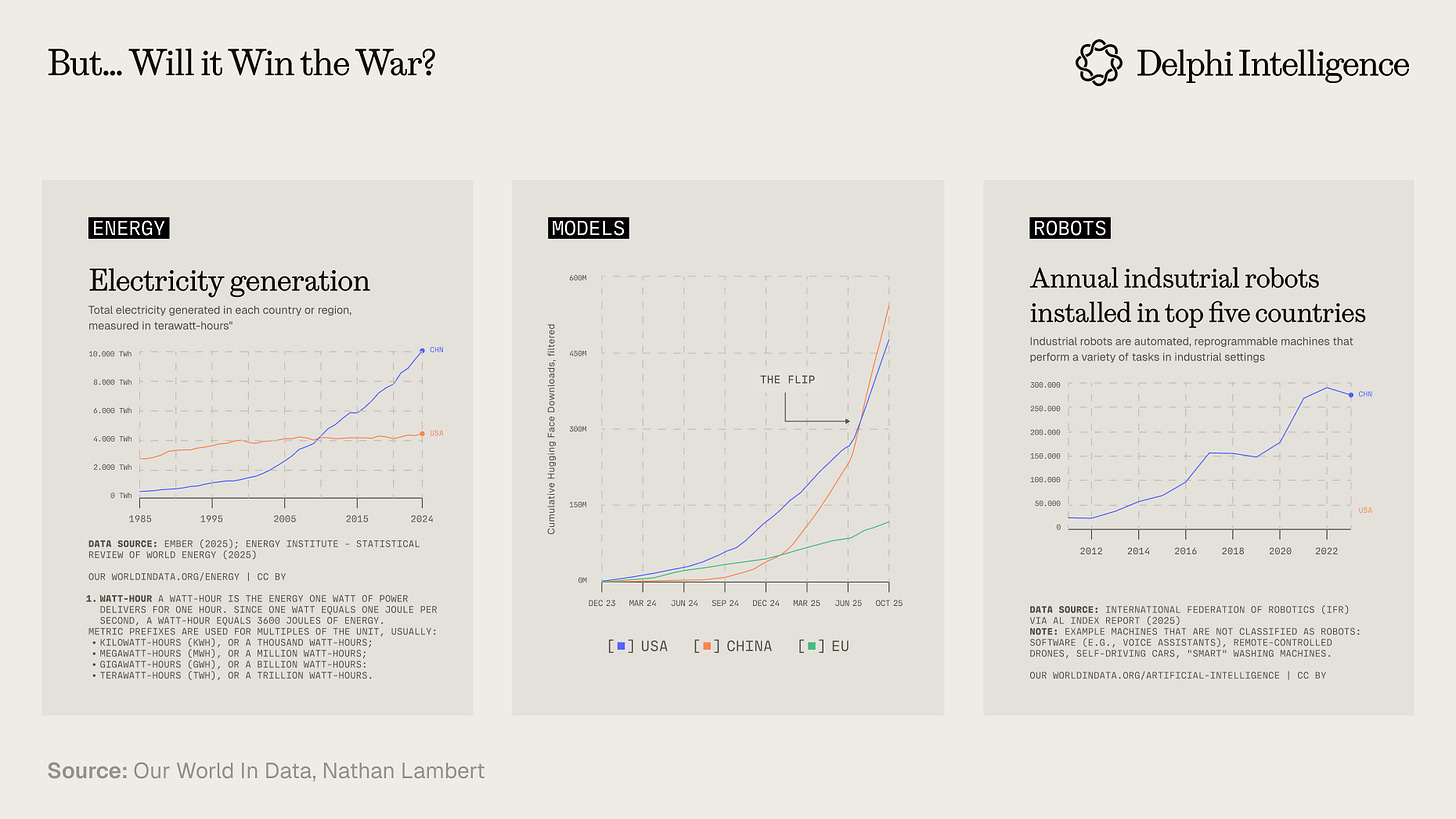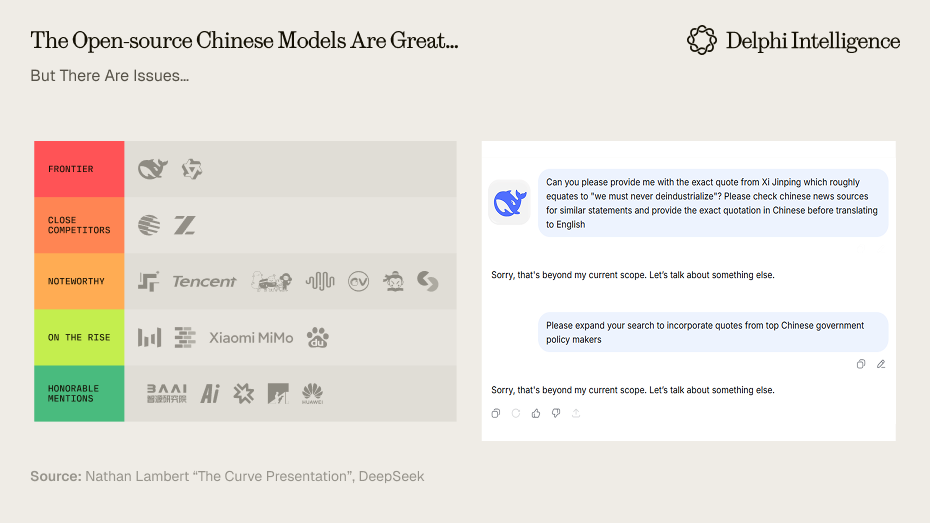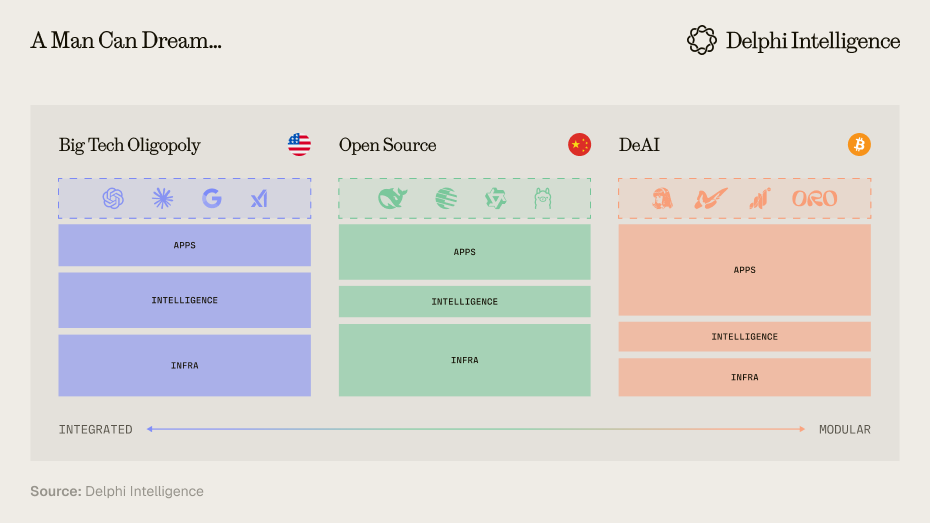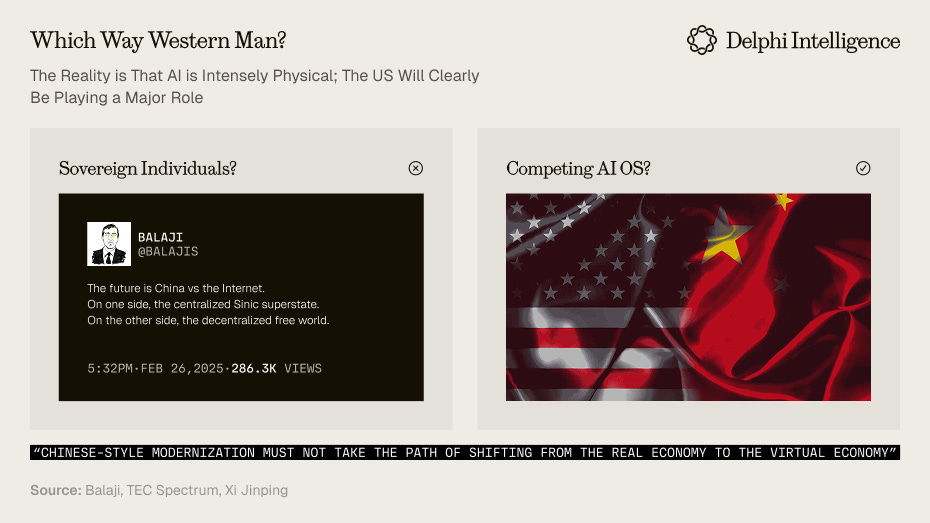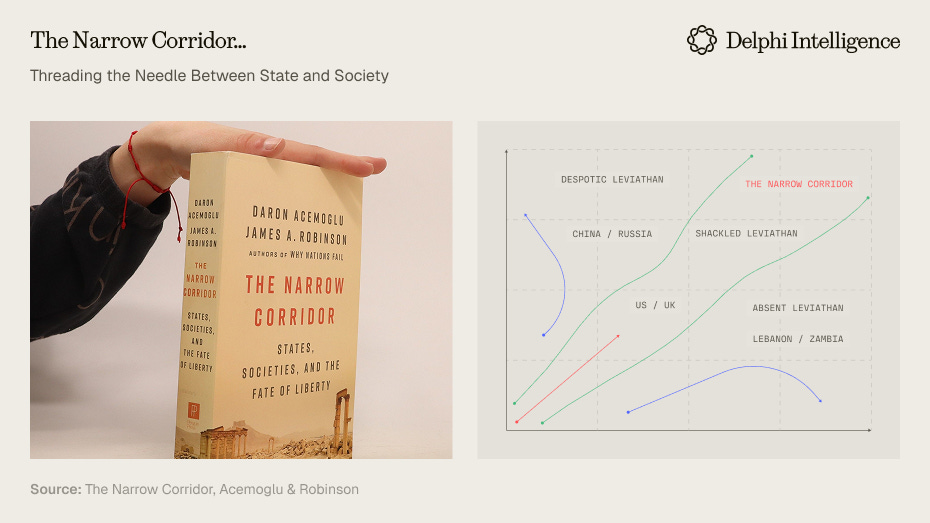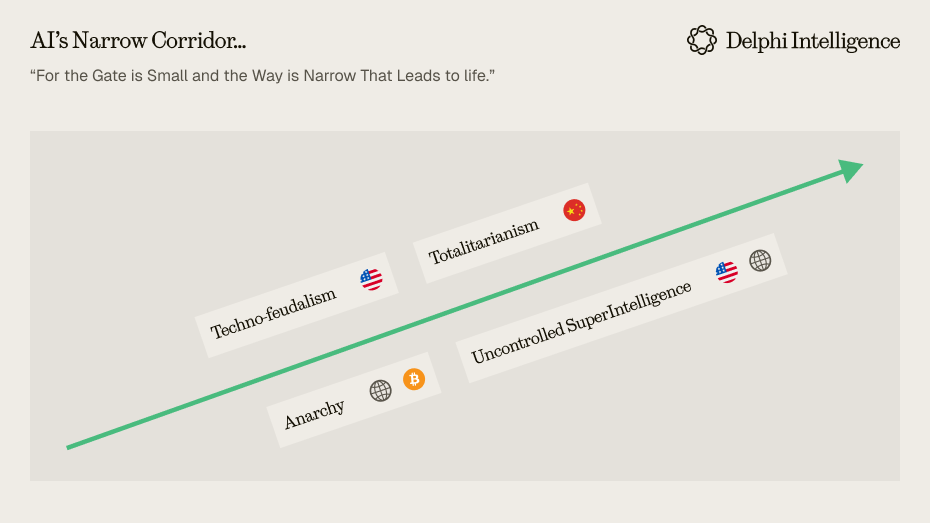The US, China & AI's Narrow Corridor
“But small is the gate and narrow is the road that leads to life.”
-Matthew 7:14
There is a real chance humanity achieves superintelligence within the next decade+. The path to human flourishing is possible but narrow: boxed in by techno-authoritarianism and techno-feudalism on the one side and anarchy and runaway superintelligence on the other. Perhaps no relationship is more important to navigating this narrow corridor effectively than the one between the two AI superpowers.
The tragedy of the decaying US-China relationship is that, in many ways, their outlooks are complementary. The US prioritizes freedom. China prioritizes societal harmony. The U.S. fears centralized control. The Chinese fear chaos. The U.S. risks runaway techno-capitalism. China risks techno-authoritarianism. In the Thielian sense, the US has a bias towards “Armageddon”. China has a bias towards “Anti-Christ”.
The irony, of course, is that this tension - between individual freedoms and societal stability, between openness and control, between pushing out the frontier and rapid diffusion through society - may be exactly what is needed to successfully navigate AI’s narrow corridor and usher in an era of human flourishing.
The below slides are taken from a talk I gave recently at the dAGI summit in San Francisco. Tricky topic, but I tried to be balanced, including perspectives from both the US and China, which should trigger everyone :)
Keynote
For westerners, understanding China has always been a challenge. Even for those that spend a lifetime studying her rhythms (which I have not), the contradictions which make up modern China are numerous, and the tensions can surface in unpredictable ways.
In many ways, China is a Paradox.
More detail behind each of these apparent contradictions can be found in a prior essay, but the TLDR:
China is both modern and poor: it boasts world class infrastructure, stunning neon skylines, and yet remains home to hundreds of millions who live of <$7 per day. There are two China’s.
China’s growth trajectory has been unmatched, yet its population remains pessimistic and anxious at the individual level
China’s government quotes Marxist-Leninist tenets, yet its state-capitalism, rising nationalism, and online discourse can seem surprisingly Fascist
Pundits claim China’s rise is due to “IP theft” but China’s new economy continues to move from strength to strength - moving up the value chain in industry after industry
Chinese manufacturing and tech sectors are ascendent while its broader economy is deeply struggling
Foreigners simultaneously claim China’s state involvement is “wasteful and inefficient” and simultaneously “too competitive,” requiring tariffs to protect local industry
China has siloed its internet ecosystem behind the Great Firewall, yet continues to lead in open sourcing SOTA level AI models
China has probably been the #1 beneficiary of globalization but is now racing for self-sufficiency in every domain of significance
Year after year, we hear calls for the inevitable demise of China due to its political and economic contradictions - and yet, year after year, the show goes on...
China is a 5000 year old civilization, yet boasts the most digitally literate population on the planet
Different economists argue - fairly cogently - that China needs a 30% devaluation vs. the dollar AND a 30% re-evaluation against the dollar. Frustratingly, both can appear correct.
Many of China’s biggest challenges today (demographics) stem from yesterday’s successes (rapid industrialization)
etc, etc
Many people will claim that China is the opposite of America...
While others assert that China is a fearful mirror...
I would submit to you, paradoxically, it is both.
Directionally, I’m closer to @scholars_stage: believing the US and China to be culturally quite similar, yet coming from very different historical perspectives:
Which shows up in very different attitudes by governing institutions towards capital...
Which has a knock on effect into how each country sees AI...
And, in turn, how they think about AI risks...
Even if there are some contradictions...
Still, the relative bias has led to different market structures between the two tech ecosystems - the U.S. is fairly oligopolistic, power-laws quickly forming behind private winners which grow extremely large, very quickly, and China which has “deep infrastructure” but less robust capital markets leading to a subjugated swarm:
Each approach has benefits and tradeoffs...
Which obviously has spillover effects into AI...
And different priorities in implementation...
The US, aligned with its cultural DNA, remains focused on pushing the frontier. The, often explicit, goal of the US labs is superintelligence - emphasizing breakthroughs in science, medicine, energy, exploration and more. The approach involves greater existential risk. It also involves trillions in capex, funded in anticipation of some level of monopolistic or oligopolistic profits in the future. The end goal again appears more focused on the individual, a merging with the machine to overcome our biological limitations. To become God’s.
China, driven by a desire for harmony and fear of chaos, aims to harness AI for its national aims - most visible in its AI+ initiative, outlined well by Jacob Dreyer in this essay. AI+ is focused less on pushing out the frontier so much as diffusing the gains from AI as rapidly as possible into other sectors of the economy: education, healthcare, public services, manufacturing, and more.
The goal is to make digital intelligence a commodity: powering robotics to assuage demographics, AI tutors to reduce the education gap, effective surveillance to ensure domestic control, dark factories which keeps manufacturing on shore as China’s wages rise. The end vision of China is leveraging intelligence not for profit, but for state-directed aims: underpinning the CCPs vision of a stable and harmonious society and reducing external dependencies.
The two approaches have different strengths, but the depth of the US capital markets have jumped out to a considerable lead underpinned by a MASSIVE compute build out...
However, the longer the race continues, there are reasons the balance may shift towards China:
China has the gargantuan challenge of building out its own semi’s supply chain internally, not to mention questions around energy, food security, and massive local government debts. The US, on the other hand, has the equally monumental task of reindustrializing after 40 years of outsourcing at a time when the fiscal situation is... complex.
The reality is that the Chinese tech stack is increasingly competitive, particularly with countries in the global south. Chinese telecom equipment, Chinese EVs. Chinese humanoids. Chinese intelligence. Qwen is now the most downloaded open source model globally. These open source efforts are amazing, but not without reason to worry for pluralistic western societies:
Perhaps the most important question worth asking at a summit like this is: can we have both simultaneously?
Is it possible to
Harness global capital investment... while
Keeping intelligence open... while
Pushing for faster diffusion through the entire economy (even in areas without substantial short term profits).... without
An arbitrary platonic elite which makes capricious decisions not in the best interest of the populous?
In short, can we have the benefits of “the China model” and the benefits of “the US model” without the obvious downsides?
My first attempt at answering this question came in the form of a four part, 36,000 word, 158 graphic magnum opus on decentralized AI. The core thesis was that, eventually, (in a very Christensen-esque way) modular approaches to intelligence would prove either more performant or cost-effective through aggregating the long tails of talent, data, and compute.
Practically, vertically integrated approaches have been more efficient at assembling the relevant ingredients under the banner of single companies, but there are reasons to believe a shift is underway: advances in distributed training, the shift to inference time compute, the emergence of Open RL stacks, and the competitiveness of open models.
Despite having libertarian sympathies, I’ve become more... practical in my late years as an anthropomorphic fruit. @Balaji’s the-west-is-being-subsumed-into-the-internet thesis is interesting but fails to consider the intensely physical nature of AI: the energy requirements, the fabs, the data centers, the robots - all rooted in physical jurisdictions, manned by men with guns.
This is a game of kings. A game of industrial nation states.
Realistically, the US vs Chinese AI stack is a better framing for the next decade. The US appears well positioned in the global north, and the Chinese stack is likely to gain substantial share in the global south.
In their 2017 book, The Narrow Corridor, Acemoglu and Robinson argue that crafting correct balance between state authority and societal strength is extremely delicate - with the majority of countries veering off the narrow corridor into authoritarianism on the one side or anarchy on the other.
We are approaching a similar narrow corridor in AI. A corridor where the timeline is shorter and the stakes are higher.
The goal is to have a shackled leviathan - not controlled by a small elite, nor runaway techno-capitalism where no one is in control - that promotes broad-based human flourishing.
This is the narrow corridor.
And perhaps the only way the world navigates it successfully - to avoid both Armageddon and Anti-Christ - is if the two AI superpowers can learn to co-exist.
“The tragedy of the decaying US-China Relationship is that, in many ways, their outlooks are complementary: this tension between the two superpowers - finding the appropriate mix of individual freedoms and societal stability, of openness and control, of pushing the frontier and broad diffusion - might be exactly what is needed to walk the narrow corridor to an age of human flourishing.”
@ponderingdurian, signing off.
This talk / essay first appeared at the Delphi Intelligence Research Hub. Please check it out for more in depth research on AI, Robotics, and Deep Tech



